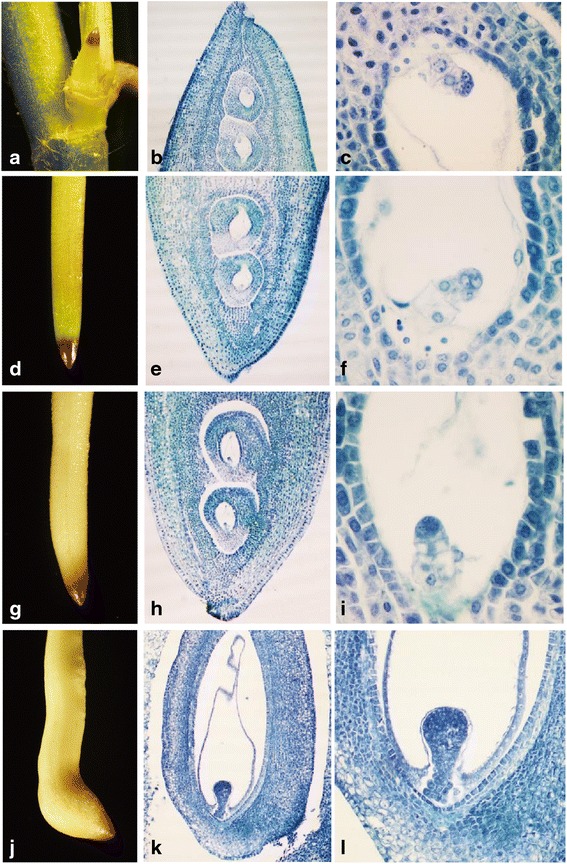Fig. 1.

Anatomical analysis of peanut pegs from four developmental stages. a Younger pegs with 2–3 mm in length (S0 pegs); b and c longitudinal section of S0 pegs (amplification: 40× and 400×, respectively); d green or purple aerial-grown pegs (S1 peg); e and f longitudinal section of S1 peg (amplification: 40× and 400×, respectively); g white pegs after soil penetration without pod enlargement (S2 peg); h and i longitudinal section of S2 peg (amplification: 40× and 400×, respectively); j pegs after soil penetration and pod enlargement (S3 peg); k and l longitudinal section of the swelling pod (amplification: 40× and 400×, respectively)
